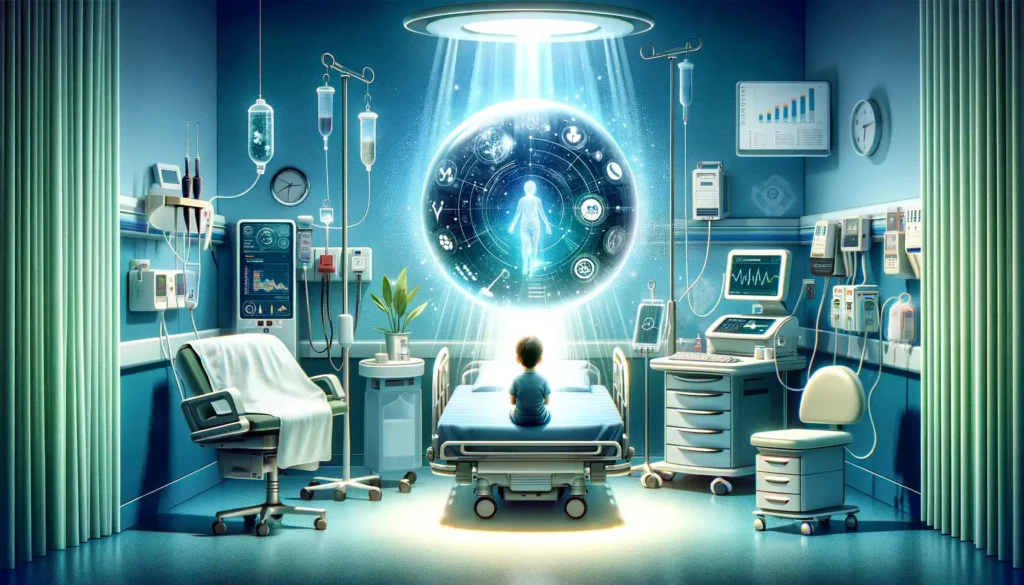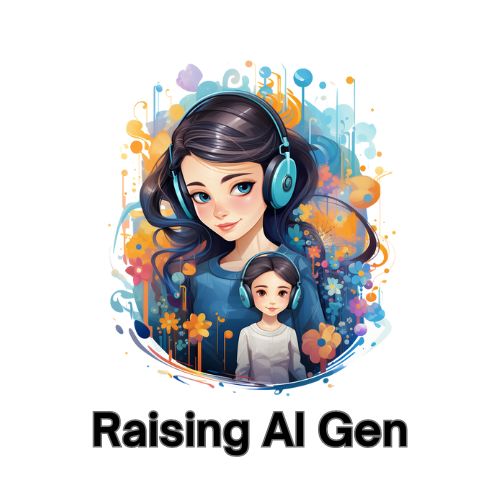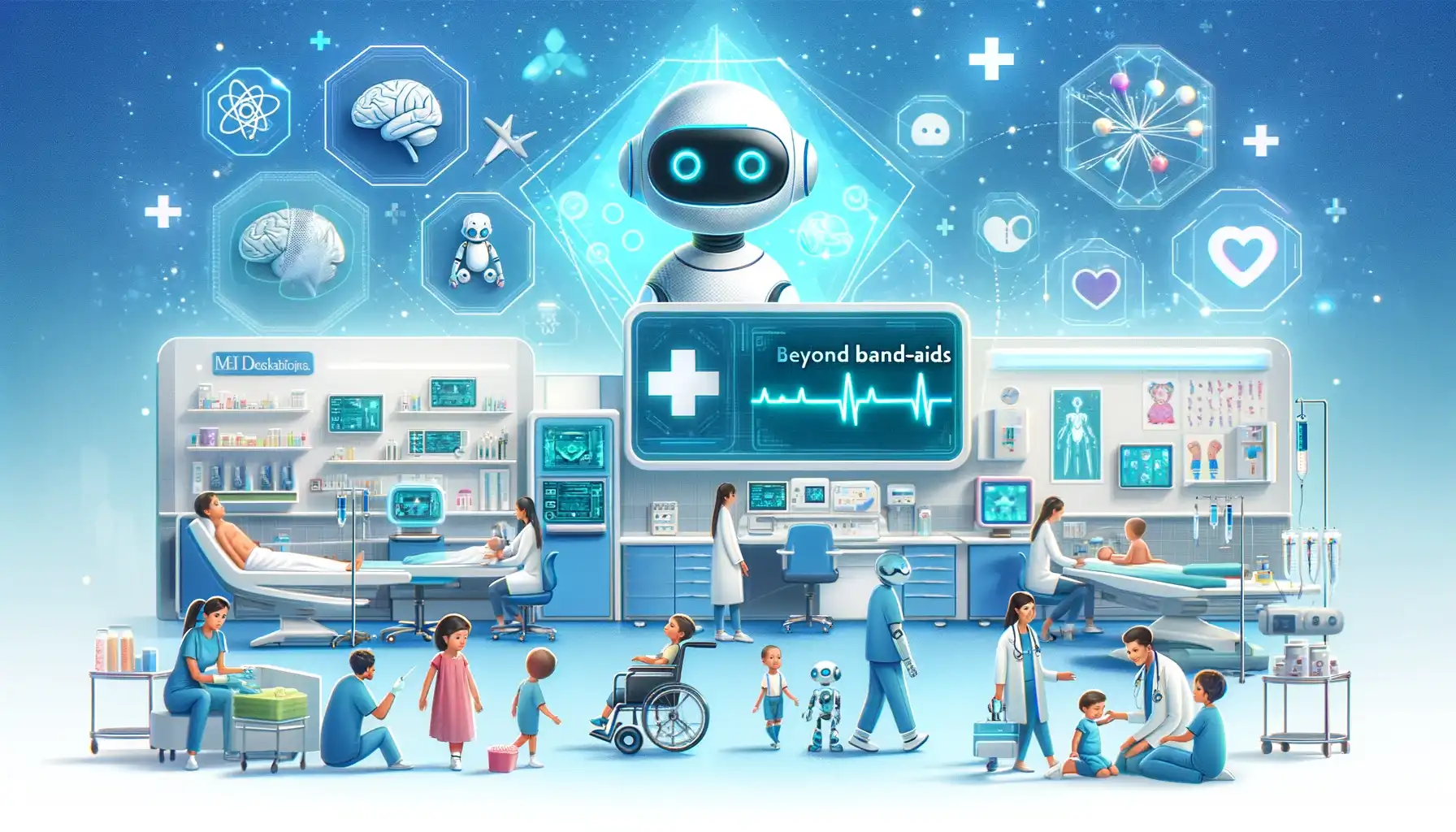In an age where artificial intelligence in healthcare is becoming more than just a futuristic notion, the pediatric landscape is witnessing a significant transformation propelled by AI innovations in pediatric healthcare. As we traverse the intricate interplay between health and technology, apps like Remini serve as harbingers of the profound changes AI can bring to our lives. No longer confined to the realm of adult medicine, innovative AI applications in pediatric care have begun to redefine the healing journey of our youngest patients.
Striving to balance innovation with introspection, the healthcare community ponders the profound implications of AI on our children’s well-being. Ethical concerns, reminiscent of past healthcare missteps, underline the urgency for circumspection in the deployment of pediatric healthcare technologies. Reflecting upon history’s lessons, from doctors endorsing tobacco to today’s digital dilemmas, we confront a poignant question: how do we shepherd the promise of AI for the betterment of child health while safeguarding young, impressionable minds?
Key Takeaways
- AI has the potential to enhance pediatric healthcare delivery and outcomes significantly.
- Generative AI, like Remini, highlights the importance of digital wellbeing for children.
- There is a need for ethical oversight in pediatric AI to prevent harm and maintain trust.
- AI-driven solutions challenge us to reconsider our approach to pediatric care.
- The rise of AI in pediatric healthcare signals a move toward more personalized and effective care strategies.
- Maintaining ethical standards in AI innovation is paramount for the mental health of younger generations.
The Rise of Digital Health in Pediatric Care
As we embrace a new era of healthcare, the field of pediatrics is undergoing a technological renaissance. Through the infusion of digital healthcare for children, we are witnessing a transformative journey – one that is crafting a future where healthcare is more accessible, precise, and tailored to the unique needs of children. From interactive patient portals to state-of-the-art monitoring devices, the digitalization of pediatric care is a profound leap toward a healthier tomorrow for the younger generations.
Understanding the Transformation
The digital revolution in healthcare has ushered in opportune solutions for pediatric care. By leveraging AI-enabled healthcare solutions for children, medical professionals can now provide more informed and effective care. This significant shift in practice not only caters to the immediate needs of pediatric populations but also equips practitioners with tools to anticipate health trends and prevent diseases before they manifest.
Stats & Figures: Pediatric Healthcare Goes Digital
Recent developments in healthcare technology have rapidly transformed how pediatric care is delivered. Consider the following statistics:
| Area of Improvement | Statistic | Impact in Pediatric Care |
|---|---|---|
| Digital Record Keeping | 80% Adoption | Enhanced accuracy in patient history and treatment plans |
| Telemedicine Consultations | 65% Increase since COVID-19 | Improved access to care, especially for remote and underserved populations |
| AI-Powered Diagnostics | 50+ AI tools approved by FDA | Faster, more accurate diagnoses allowing for timely interventions |
This data paints a clear picture: digital tools are not just a temporary fix, but a long-term part of advancing pediatric healthcare.
Key Technological Drivers Behind the Shift
Underpinning the vibrant landscape of digital pediatric care are several key technologies:
- Machine Learning: Enables predictive analytics to foresee potential health issues.
- Telemedicine: Expands reach, ensuring care is accessible wherever children are located.
- Ambient Intelligence: Environmental sensors that offer continuous monitoring to support preventative healthcare strategies.
- Contactless Services: Reduce the spread of infectious diseases while providing seamless care.
These technological advancements collectively illustrate the power of innovation in shaping a more resilient and capable healthcare ecosystem for our children.
AI Innovations in Pediatric Healthcare
The integration of AI-driven solutions for pediatric medicine is creating a new frontier in the realm of child health. Leveraging the analytical power of machine learning in pediatric healthcare, clinicians can now approach patient care with a degree of personalization and precision that was previously unattainable.
Personalizing Treatment Through Predictive Analytics
Predictive analytics stand as a beacon in the personalization of pediatric healthcare. These ai-driven solutions utilize large datasets to inform and forecast health outcomes for individual patients, marking a significant pediatric healthcare breakthrough. The goal is to anticipate and prevent diseases by harnessing the power of data to tailor treatment plans that grow and adapt with the child.

Enhancing Diagnosis with Image Recognition and Machine Learning
The advent of image recognition technologies, bolstered by robust machine learning algorithms, has revolutionized the accuracy and efficiency of diagnoses in pediatric care. By rapidly analyzing medical images, these systems can detect anomalies and conditions that the human eye may overlook—speeding up the diagnostic process and enabling timely care.
Empowering Providers Through Natural Language Processing
Natural language processing (NLP) empowers providers by simplifying the interaction with electronic health records and enhancing clinical decision support. Beyond administrative convenience, NLP-driven applications like ChatGPT offer clinicians a sophisticated tool for diagnostic assistance, treatment planning, and even patient education, changing the traditional paradigms of healthcare communication and information processing.
Challenges and Ethical Considerations in Pediatric AI Applications
The advent of AI in pediatric healthcare has opened up vistas of opportunities for improved care but also brought forth significant challenges and ethical dilemmas. Generative AI applications like Remini showcase potential advancements in healthcare but simultaneously underline the mental health impacts of AI, especially on vulnerable populations like children. Such impacts accentuate the necessity for ethical review boards for AI, entities entrusted with the oversight of how these nascent technologies are being employed—a measure curiously akin to the safety nets established in clinical trials of the past.
As generative AI technologies continue to weave into the fabric of healthcare, the challenge extends beyond their capabilities, placing a spotlight on the responsible deployment of AI technologies. These innovations must be navigated with a keen eye toward the diverse ways in which they intersect with pediatric mental health, shaping perceptions and influencing the culturally laden field of identity formation. Moreover, the ethical considerations become even more pronounced when addressing AI’s role in shaping norms, behaviors, and the self-image of the following generation.

Experts highlight the potential influence of AI applications on young minds—raising crucial questions about the nature of beauty standards, the implications of personalized digital encounters, and the subtle engineering of societal expectations. Thus, it becomes not just a technological or clinical query but a profound ethical conundrum: how does one align the pursuit of innovative technological deployments with the foundational principles of pediatric care and mental health safeguarding?
For instance, consider the following comparative analysis:
| AI Application Aspect | Potential Positive Impact | Ethical Consideration or Challenge |
|---|---|---|
| Automated diagnostics | Speedy and accurate identification of health issues in children. | Dependence on AI over human judgment might lead to oversight of nuanced pediatric conditions. |
| Customized treatment plans | Personalized healthcare leading to better outcomes. | Risk of data misuse or breach, potentially jeopardizing patient confidentiality. |
| Interactive health apps | Engagement and educational value for child and caregiver. | Alteration of self-image and possible mental health issues due to idealized or gamified representations. |
The table above succinctly taps into the pressing need for a thoughtful and ethical integration of AI in the realm of pediatric health services. Addressing these ethical challenges is not merely about regulation but involves cultivating an ethos within the healthcare technology sector—one where the welfare of the child is the central tenet of innovation and use.
In conclusion, while we harness AI’s potential to transform pediatric healthcare, the call for robust ethical review boards for AI, vigilant assessment of mental health impacts of AI, and a commitment to the responsible deployment of AI technologies is unequivocal. These steps are not simply ancillary; they are essential for ensuring the technology’s alliance with the doctrines of care and the psychological well-being of the generations to come.
Emerging Trends and Future Prospects in AI-Driven Pediatric Medicine
The horizon of AI innovations in pediatric healthcare is brimming with advancements that promise to transform the realm of child health. As we peer into the future, trends such as the explosion of the Metaverse in healthcare and the integration of blockchain technology in pediatric care stand out as game changers. These are not just incremental steps forward—they represent a paradigm shift in how we approach, manage, and optimize pediatric health services.
The Metaverse and Virtual Reality: A New Frontier in Child Health
Venturing into the Metaverse offers an unprecedented platform where virtual reality (VR) can be harnessed for therapeutic and educational purposes in pediatric medicine. Imagine a world where children can learn about their health and undergo treatments within a digitally crafted environment, custom-built to soothe and educate. The Metaverse stands poised to redefine patient engagement, offering immersive experiences that could significantly enhance treatment adherence and the effectiveness of health interventions.
The Role of AI in Managing Chronic Conditions among Children
As chronic conditions among children continue to pose significant challenges, AI-driven solutions for pediatric medicine are stepping up to provide predictive care and management. AI’s increasing ability to interpret complex health data and predict future trends ensures a proactive stance towards pediatric chronic disease management. Through personalized care plans and intervention strategies, AI has become a cornerstone in shaping the proactive management of childhood diseases, advancing the quest for better long-term health outcomes.
Blockchain and Distributed Ledger Technology for Secure Health Data
In an era where data breaches are a grave concern, blockchain technology offers a bastion of security for sensitive pediatric health records. Through distributed ledger technology, healthcare systems can ensure the integrity and confidentiality of health data. This innovation not just fortifies the healthcare records against cyber threats but also fosters a solid trust framework between healthcare providers and families—assuring them that their cherished information is handled with the utmost care and protection.
Frequently Asked Questions
| Question | Answer |
|---|---|
| How is AI used in pediatrics? | AI is utilized in various ways in pediatrics, including for diagnostic support, treatment planning, and predicting patient outcomes. It aids in interpreting complex medical data, providing personalized treatment options, and improving the accuracy of diagnoses. |
| How is AI used with children? | AI is used with children to monitor health, assist in early detection of diseases, support developmental and educational needs, and improve communication and behavioral understanding. It also plays a significant role in personalized medicine and therapeutic interventions. |
| Which type of AI is currently being used in medical care today? | Currently, machine learning algorithms, including deep learning and neural networks, are widely used in medical care. These AI systems analyze large volumes of data to identify patterns, support clinical decision-making, and predict health outcomes. |
| What is an example of artificial intelligence in healthcare? | An example of AI in healthcare is predictive algorithms used in diagnosing conditions like sepsis or cancer. AI-powered tools can analyze medical images for more accurate diagnoses or assist in personalized drug therapy planning based on a patient’s genetic makeup. |
Further Reading
| Title | Link |
|---|---|
| AI Tools for Unveiling Behavioral Disorders in Children | Read More |
| Understanding Child Behavior with AI Analysis | Read More |
| AI-Powered Parent-Child Communication | Read More |
| AI in Managing Children’s Activity | Read More |
| AI in Early Childhood Education | Read More |
| AI for Autism | Read More |
| AI Personalized Learning | Read More |
| AI Cognitive Skills for Kids | Read More |
| A Review of the Role of Artificial Intelligence in Healthcare | Read More |





